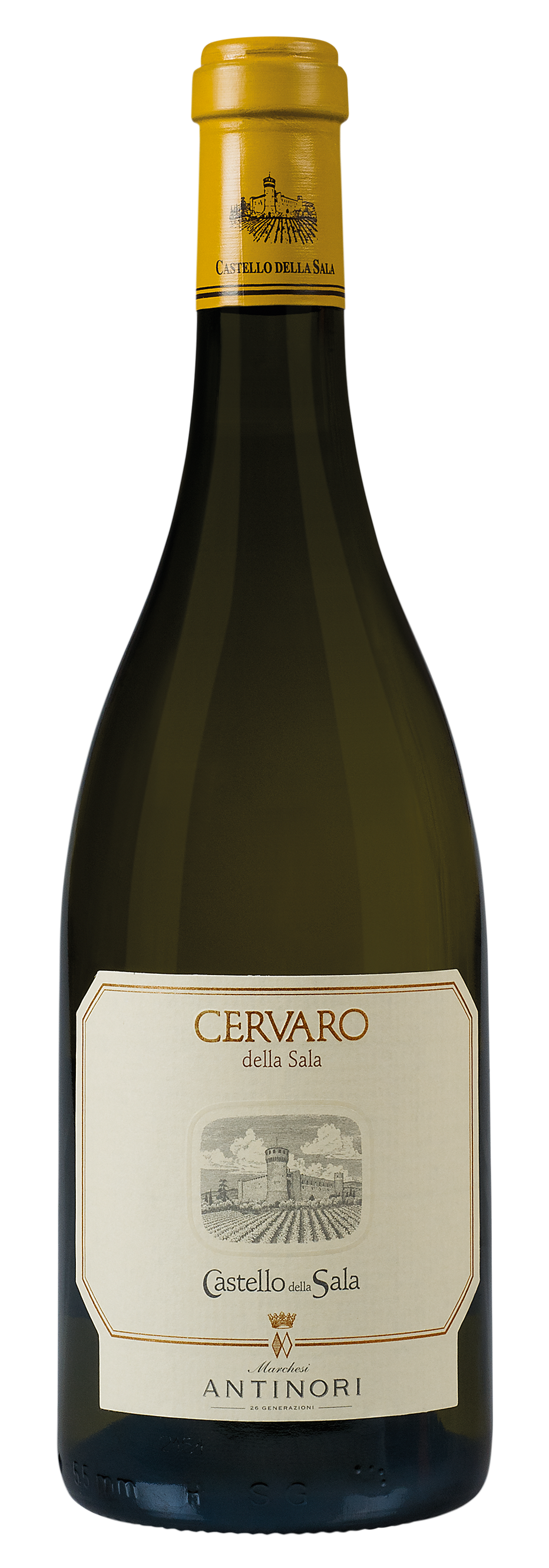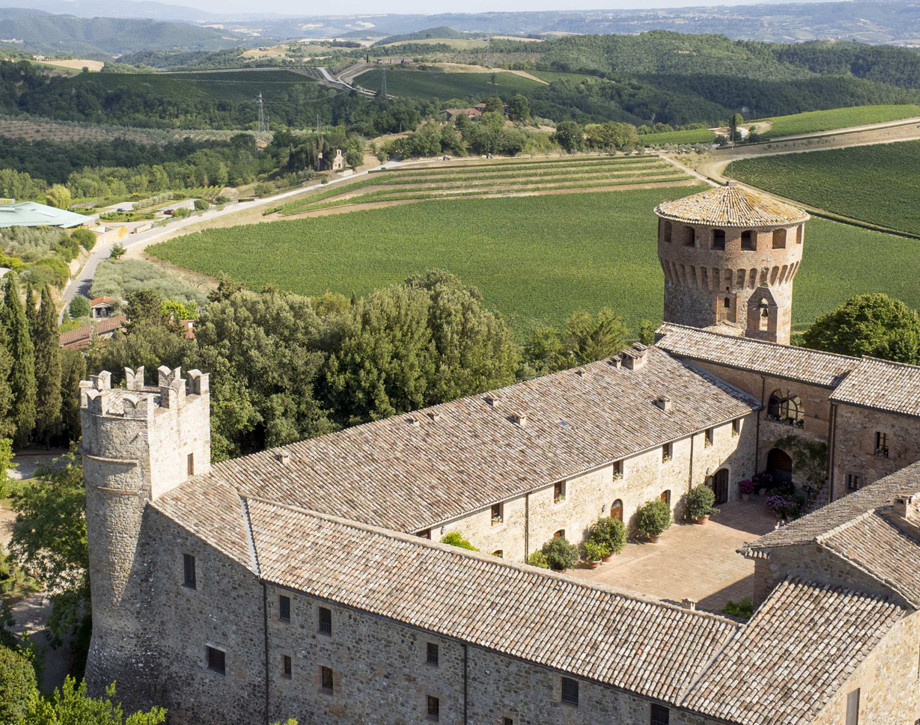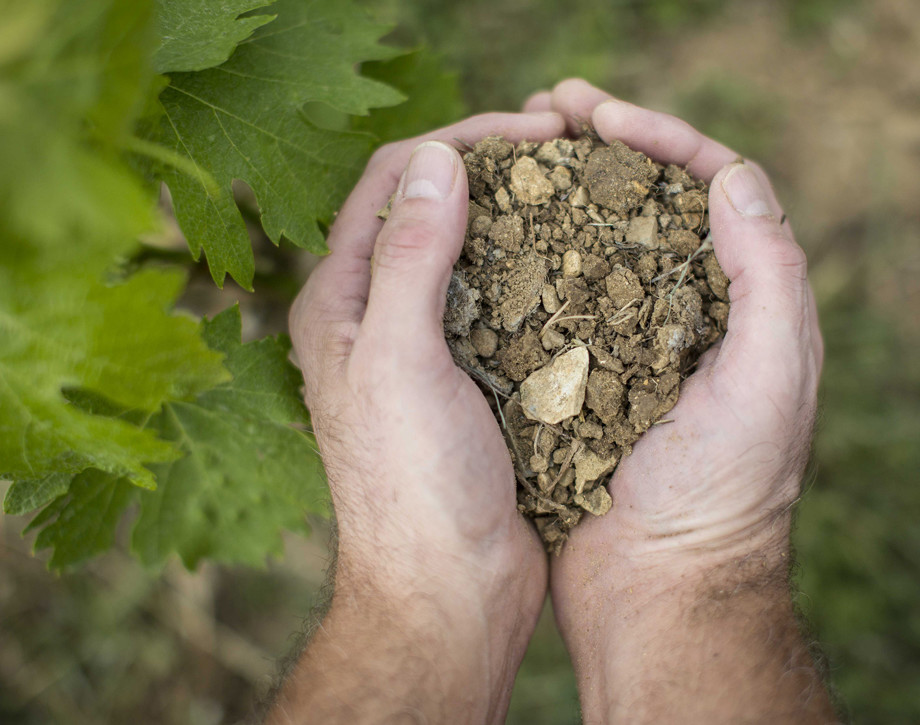Cervaro della Sala 2017
Climate
2017 was, on the whole, a dry year with a winter characterized by an absence of rainfall and temperatures which were below seasonal averages. A late frost, which struck particularly hard low-laying vineyard plots during the month of April caused a loss of grape production. The warm and dry weather of the summer months favored an early ripening but guaranteed as well a very healthy crop. Drip irrigation was utilized to combat the scarcity of water which occurred in certain vineyard parcels. The harvest took place with the picking of healthy grapes, capable of producing a wine with a notably positive balance between acidity and alcohol. The picking of the Chardonnay to be utilized for Cervaro della Sala began at the end of the second week of the month of August while the Grechetto was harvested during the first days of the month of September.
Vinification
The fermentation cellars have been constructed so as to take full advantage of the principal of gravity flow and allow the management of the grapes and the period of skin contact without any sort of mechanical action deriving from the pumping of the crop or must. The picking takes during the very first hours of the morning in order to bring to the cellar fully healthy grapes which have not been stressed by high daytime temperatures. The must produced by a four hours period of skin contact at a temperature of 50° Fahrenheit (10 °C) is transferred by gravity flow into stainless steel decantation tanks where they lose their impurities before going into 60-gallon oak barrels. Here they ferment and then are put through a complete malolactic fermentation. After five months in oak, the wine goes back into stainless steel to be blended with the Grechetto, which is fermented on its own without any contact with oak. The Cervaro della Sala, after bottling, is then given a further several months, pre-release period of bottle aging in the historic cellars of the Castello della Sala.
Tasting Notes
The 2017 vintage, characterized by a generally warm climate, nonetheless maintains the freshness and the typical Mediterranean style of Cervaro della Sala. The nose offers perceptible notes of chamomile and flint. The palate is savory with the characteristic and delicate sensations of vanilla and butter which meld gracefully into hints of tropical fruit to compose a well-defined bouquet. The wine is still young, but will be able to evolve well for years to come as well.
Awards
James Suckling 99/100 USA

The Wine
The name Cervaro comes from the noble family that owned Castello della Sala during the 14th century, Monaldeschi della Cervara. A blend of Chardonnay grapes and a small quantity of Grechetto make a wine that can age over time and represent the elegance and complexity of this unique estate. Cervaro della Sala is one of the first Italian white wines to have malolactic fermentation and aging take place in barriques. The first vintage of Cervaro to be produced was the 1985 vintage.

In Honor of the Monaldeschi della Cervara Family
The wine’s name honors the Monaldeschi della Cervara family who was the historic owner of Castello della Sala in the XVI century.
The Barrique
Cervaro della Sala was one of the first Italian white wines to have malolactic fermentation and aging take place in barriques.
The Concept
The idea behind Cervaro della Sala was to craft a white wine able to age over time.
The Enologist
In 1985, Renzo Cotarella, who was chief enologist at Castello della Sala at that time, made the first vintage of Cervaro della Sala.
Climate
The 2022 growing season in Orvieto began with warmer temperatures and dry conditions during both winter and spring. The month of June saw no precipitation and registered several heat spikes. Despite these climatic conditions, the vines did not suffer drought stress due to existing pedoclimatic conditions in Castello della Sala’s vineyards. Rain showers at the beginning of August revitalized both the vines and fruit allowing the grapes to reach optimal ripeness. This year’s dry weather ensured perfectly whole, healthy berries, minimized vineyard maintenance, and produced well-balanced, healthy fruit with a good aromatic profile. Harvesting activities of Chardonnay for Cervaro della Sala, which was of exceptional quality, got underway the third week of August. The grapes were fully mature, with outstanding freshness and had an excellent aromatic profile. Grechetto was harvested three weeks later, towards mid-September.
Vinification
The vinification cellar was designed to take full advantage of gravity flow; a concept that allows us to handle the harvested berries and fermentation processes as gently as possible without the use of mechanical pumps. The grapes are harvested in the early morning hours to preserve the purity of the fruit and protect it from elevated daytime temperatures. The must, which has undergone maceration on the skins at a temperature of 10 °C (50 °F) for about four hours, is first transferred by gravity flow into tanks for decantation and clarification, then transferred into barriques where alcoholic fermentation takes place followed by partial malolactic fermentation. In February, Chardonnay is ready to be transferred back into stainless steel vats and blended with Grechetto, which was fermented separately and did not age in oak. Afterwards, Cervaro della Sala aged in the bottle for several months in Castello della Sala’s historic cellars before being released for sale.
Historical Data
The name Cervaro comes from the noble family that owned Castello della Sala during the 14th century, Monaldeschi della Cervara. A blend of Chardonnay grapes and a small quantity of Grechetto make a wine that can age over time and represent the elegance and complexity of this unique estate. Cervaro della Sala is one of the first Italian wines to have malolactic fermentation and aging take place in barriques. The first vintage of Cervaro to be produced was the 1985 vintage.
Tasting Notes
Cervaro della Sala 2022 is a light straw yellow in color with greenish hues. The nose presents slight smoky notes of cedar and flint followed by floral hints of Spanish broom and mimosa blossoms. The palate is vibrant, fresh characterized by notes of vanilla, lemon butter and small pastries. Cervaro della Sala has outstanding aging potential but can be enjoyed immediately.

Castello della Sala
Castello della Sala is located in the Umbria region, not far from the Tuscan border, about 18 kilometers from the historic city of Orvieto. The Medieval castle’s property extends over an area of 600 hectares (1482 acres), 229 hectares (495 acres) are planted with vineyards at an altitude that varies between 220 and 470 meters above sea level (722/1541 feet) on the gently rolling hillsides that characterize the beautiful countryside in this area. Castello della Sala is the perfect place for growing white varieties. The vines grow in clay and calcareous based soils, rich in fossil shells, and they are well exposed to the rising of the sun with an excellent difference of temperature between day and night. The one exception to the rule is Pinot Noir, the only red variety that has found in this area ideal growing conditions to best express its full potential.

Soil
Originating in the Pliocene period, rich in marine fossils with veins of clay.


















